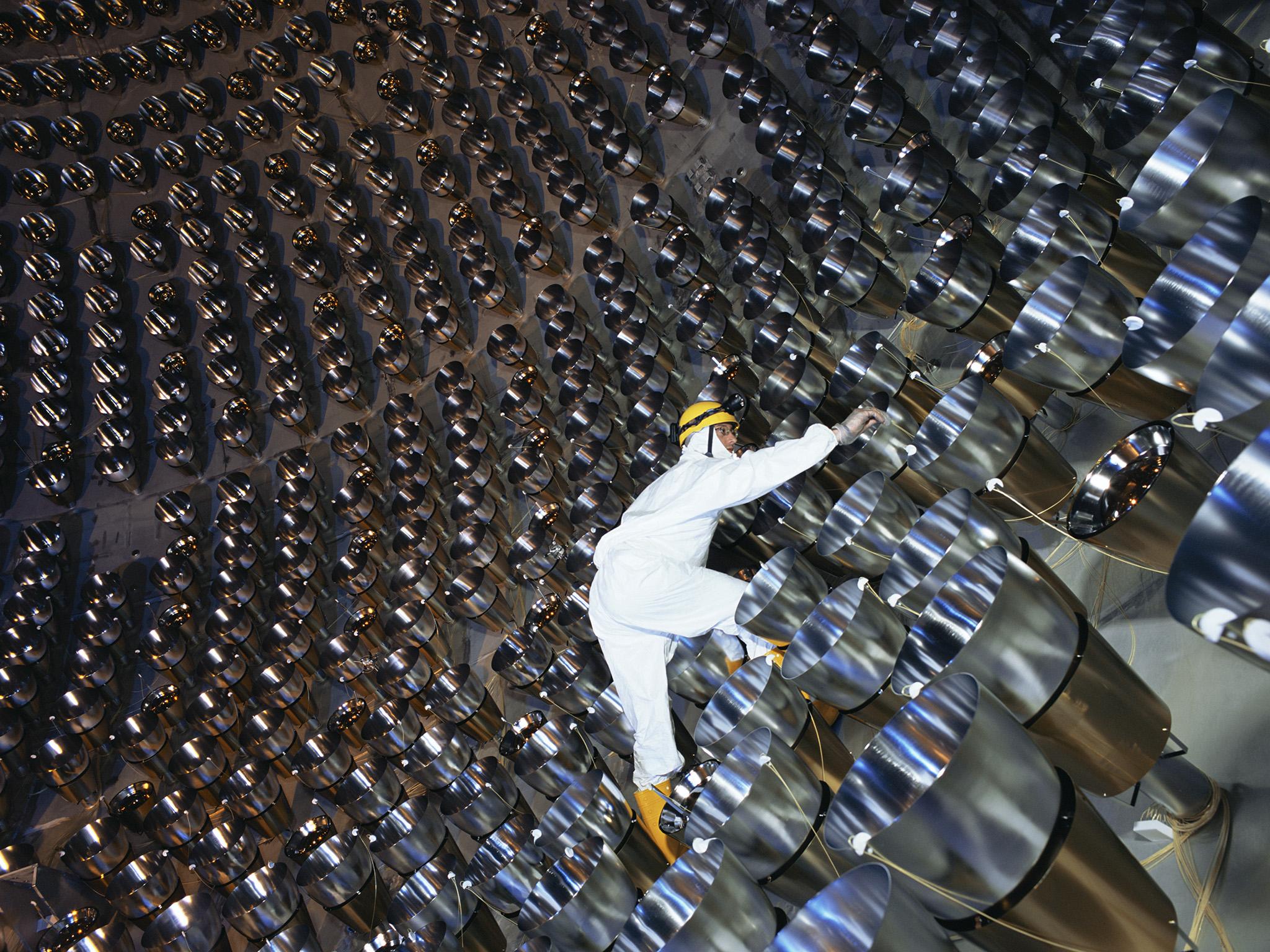Scientists get closest glimpse yet of what causes the sun to shine

Your support helps us to tell the story
From reproductive rights to climate change to Big Tech, The Independent is on the ground when the story is developing. Whether it's investigating the financials of Elon Musk's pro-Trump PAC or producing our latest documentary, 'The A Word', which shines a light on the American women fighting for reproductive rights, we know how important it is to parse out the facts from the messaging.
At such a critical moment in US history, we need reporters on the ground. Your donation allows us to keep sending journalists to speak to both sides of the story.
The Independent is trusted by Americans across the entire political spectrum. And unlike many other quality news outlets, we choose not to lock Americans out of our reporting and analysis with paywalls. We believe quality journalism should be available to everyone, paid for by those who can afford it.
Your support makes all the difference.It nourishes almost all life on our planet and its gravity holds our vast solar system together, yet there are few ways for scientists to study the processes that cause the sun to shine.
This week, researchers brought us closer to fully understanding the reactions at the sun’s core by creating a detailed picture of the energy it emits.
The team operating the Borexino detector in Italy spent 10 years collecting and analysing neutrinos, also known as ‘ghost particles’, which emanate from the sun’s core onto the Earth’s surface at a rate of 100 billion per second.
“With this new data we have arguably the crispest image of the fusion reactions that are happening within the sun,” said study co-author and University of Massachusetts Amherst physicist, Andrea Pocar.
Their findings confirm and in some cases add precision to our existing theoretical perception of what goes on in our parent star’s interior, “profoundly strengthening” our understanding of the sun.
“Once you have more precise data, you can feed it back into the model of how the Sun is behaving, then the model can be refined even more,” said Dr Pocar.
Our current model of the sun suggests that 99 per cent of its energy stems from a sequence of nuclear fusion processes in which hydrogen is converted to helium. During these processes, neutrinos are also released.
Neutrinos, tiny particles with nearly no mass and no electronic charge, are so small that they pass through matter and very rarely interact with it, often from one side of the Earth to another.
The researchers used the Borexino detector – built underneath a mountain 60 miles east of Rome – to detect the small flashes of light emitted by neutrinos as they interact with electrons on Earth.
The detector itself is surrounded by 1,000 tonnes of water and is the most radiation-free medium on Earth.
By collecting and analysing roughly 100 neutrinos every day, the team were able to reconstruct these nuclear fusion processes, known as proton-proton (pp) reactions, with unprecedented precision.
Dr Pocar explains that over time, improved algorithms and an increased understanding of the detector itself allowed the 100-strong team to go from studying individual neutrinos to creating a snapshot that encompasses the sun’s full energy spectrum – “a single photo that reflects the full forest”.
“This study is the culmination of a decade of data but more than two decades of thinking of the experiment, designing it, building it and taking the data,” said Dr Pocar.
While scientists can readily learn about the sun by measuring the amount of heat and light released, physical research of its core is unsurprisingly difficult.
“The neutrinos are the only thing that can emerge virtually unaffected from the core of the Sun,” Dr Pocar explained.
“Everything else we see about the sun has gone through a lot of processes from the core to the surface that have taken tens of thousands of years.”
Alternatively, neutrinos take only seven minutes to reach earth. Because of this, the team’s snapshot also confirms the current theory that solar activity has remained in constant equilibrium for at least 100,000 years.
Dr Pocar also hopes the Borexino experiment, set to take place for another three years, will be able to unravel one of the final mysteries of the sun’s interior – that of its metal content. If solved, the issue could change our understanding of not just our sun, but “virtually half the stars that exist” across the universe.
Elsewhere, scientists at the Deep Underground Neutrino Experiment in South Dakota are using neutrinos to try to answer some of science’s largest questions, such as that of anti-matter and proton decay. They are set to record their first event in 2024.
Join our commenting forum
Join thought-provoking conversations, follow other Independent readers and see their replies
Comments